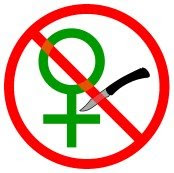Lifting the Offshore Drilling Ban

This is a small but critical step toward freeing up our own oil resources for the greater good of America. Just the act of opening new areas of off-shore oil reserves will lower oil prices through good old competition.
Besides opening all currently closed areas to drilling the other thing we need to do is declare and enforce a 200 mile exclusionary zone around our coastline to prevent any foreign exploration or drilling. This would stop the outrageous situation where China in collusion with Cuba are now starting oil exploration within 100 miles of our shores.
Oil has become a weapon used by the islamic world to weaken the West and hasten the takeover by islam. Taking away much of the leverage that OPEC wields will give us a much stronger position in the war against the spread of islam.
FROM FRONTPAGEMAG.COM:
Lifting the Offshore Drilling Ban
By Ben Lieberman
The Heritage Foundation | 7/15/2008
Washington must do something about the increasing price of gasoline, now topping $4 per gallon. One important step would be to tap our own supplies of oil. Yet for decades, overlapping congressional and presidential restrictions on drilling for energy in the Outer Continental Shelf (OCS) have stood in the way of lower prices for oil and natural gas.
The President took a positive step [yesterday] by rescinding the executive moratorium on exploration and production in American waters. However, Congress still needs to act in order to make this oil available.
Congressional Restrictions on Drilling
Many of America's offshore areas are off-limits to energy production. Beginning in 1982, Congress restricted more and more offshore areas through annual Department of the Interior (DOI) appropriations. The DOI has authority over the OCS, which includes most areas more than three miles offshore. Through this annual process, Congress chose to deny DOI the funding necessary to conduct leasing of new offshore areas to oil and natural gas companies.
These off-limits areas comprise 85 percent of the OCS—almost everywhere except the central and western Gulf of Mexico—and the congressional moratoria have become a standard feature of each year's DOI appropriations bill. Until recent years, these restrictions were easily renewed with little controversy, but with the dramatic rise in oil and natural gas prices, as well as the desire to reduce oil imports from unfriendly foreign countries, there have been several legislative efforts to roll them back. Thus far, none of these efforts has been successful.
Most recently, H.R. 6108, the Deep Ocean Energy Resources (DOER) Act, would allow each coastal state to decide whether and where it wants drilling off its coast out to 100 miles. Beyond 100 miles from the coast, states would not have veto power; thus, deepwater areas would be open to exploration and production. The bill also has provisions for revenue sharing between the federal government and each state that allows drilling, similar to provisions that allow drilling on federal lands. The bill is modeled after the 2006 DOER Act, which passed the House but was never considered in the Senate.
In addition, H.R. 2784, the National Environment and Energy Development Act, would also open up much of America's waters to energy production. Despite having 171 co-sponsors, it has yet to be allowed to come to a vote.
Lifting the White House Opposition to Drilling
In 1990, President George H. W. Bush issued a presidential directive restricting new offshore exploration and drilling. In 1998, President Bill Clinton extended these restrictions through 2012. For his first seven years in office, the current President had not seen fit to lift the moratorium, and he was unhelpful during debate over the 2006 DOER Act.
Now the President has lifted the executive branch restrictions and said that he will support legislation opening the OCS. If Congress is serious about addressing high energy costs, it should quickly send legislation to the President that removes restrictions on these vital energy reserves.
Tremendous Potential with Little Risk
These restrictions effectively banned new offshore energy production off the Atlantic and Pacific coasts, parts of offshore Alaska, and the eastern Gulf of Mexico. Recent DOI estimates put the amount of energy in these off-limits areas at 19.1 billion barrels of oil and 83.9 trillion cubic feet of natural gas—approximately 30 years' worth of imports from Saudi Arabia and enough natural gas to power America's homes for 17 years. It should also be noted that these initial estimates tend to be low.
OCS restrictions are a relic of the past. They were put in place at a time when energy was cheap, the need for additional domestic supplies was not seen as dire, and the political path of least resistance was to give in to environmentalists. All that has changed, with more than a quadrupling of oil and natural gas prices since the restrictions were first imposed. Extra energy is badly needed, and the risk of producing it has been reduced. All new drilling would be subject to strict safeguards and would require state-of-the-art technology with a proven track record for limiting the risk of spills.
One Step Closer
By lifting the executive moratorium against OCS exploration and production, the President has brought America one step closer to accessing promising sources of domestic oil and natural gas for decades to come. Now, Congress must show the nation that it is serious about meeting our energy needs by supporting the production of American energy from American waters.


.jpg)
















